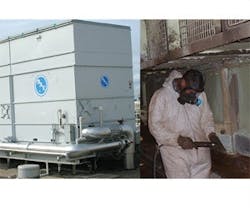Is HVAC Refurbishment an Option?
Evaluating the cost of replacement vs. refurbishment when it comes to HVAC equipment is a tough decision, but one that every facilities professional will probably face. So how do you know when refurbishment is a viable option?
According to Walt D’Ascenzo, senior project manager at Facility Engineering Associates in Fairfax, VA, when it seems that the refurbishment will offer at least 10+ years of reliable service, it’s probably worth the work and money. “Some equipment is robustly constructed and can easily go beyond its statistical useful life with refurbishment,” he explains. “However, it will still eventually have to be replaced when it reaches its limits. Then it becomes a business decision. Is the cost worth it for only an additional 10 years of service if luck holds out?”
Ryan Brown, vice president of System Heating and Air Conditioning Co. Inc. in Seattle, emphasizes the things to consider when determining the feasibility of HVAC refurbishment:
- Accessibility. Equipment that’s easily accessible may have lower refurbishment and lower replacement costs, but the cost differential may be less clear when dealing with equipment built into a rooftop mechanical room.
- Shutdown availability. Does the system serve critical facilities? Can equipment be shut down long enough to accommodate the refurbishment process?
- Future plans. Equipment refurbishment is a cost-effective way to maximize ROI and may be an incentive for buyers.
A straightforward device (like a central station air-handling unit) can be cleaned up; leak tested; receive a replacement fan shaft, bearings, control valves, and damper actuators; and be viable for many years. Cooling towers can be candidates for refurbishment, too. “Something more complex, like a packaged air conditioner or chiller, may not be a candidate,” says D’Ascenzo. “Boilers also have to be carefully evaluated.”
Refurbishment can save up to 60 percent when compared to the cost of replacement. Brown also estimates that an additional 10 to 20 years can be added to the life of an HVAC system through proper refurbishment.
But there are also risks involved. “Owners should consider whether the trade activities required are compatible. A coating specialist applying solvent while a sheet metal tech causes sparks by grinding metal may have disastrous results,” says Brown.
Brown also warns that coatings (fire-retardant elastomeric epoxies, fiberglass, and polyureas) – often an option in refurbishment – aren’t suitable for every application, and that the best product is rendered useless by improper surface preparation and application. “Failed coatings can and do cause damage to equipment and downstream systems. There’s a broad cost differential to coating systems. Cheapest is not best.”
An owner with a good preventive maintenance program has the best chance of being successful with refurbishment. “If the equipment was left on its own with no intervention in the form of preventive maintenance, then chances are good that refurbishment may not work out,” says D’Ascenzo.
Leah B. Garris ([email protected]) is managing editor at Buildings magazine.
